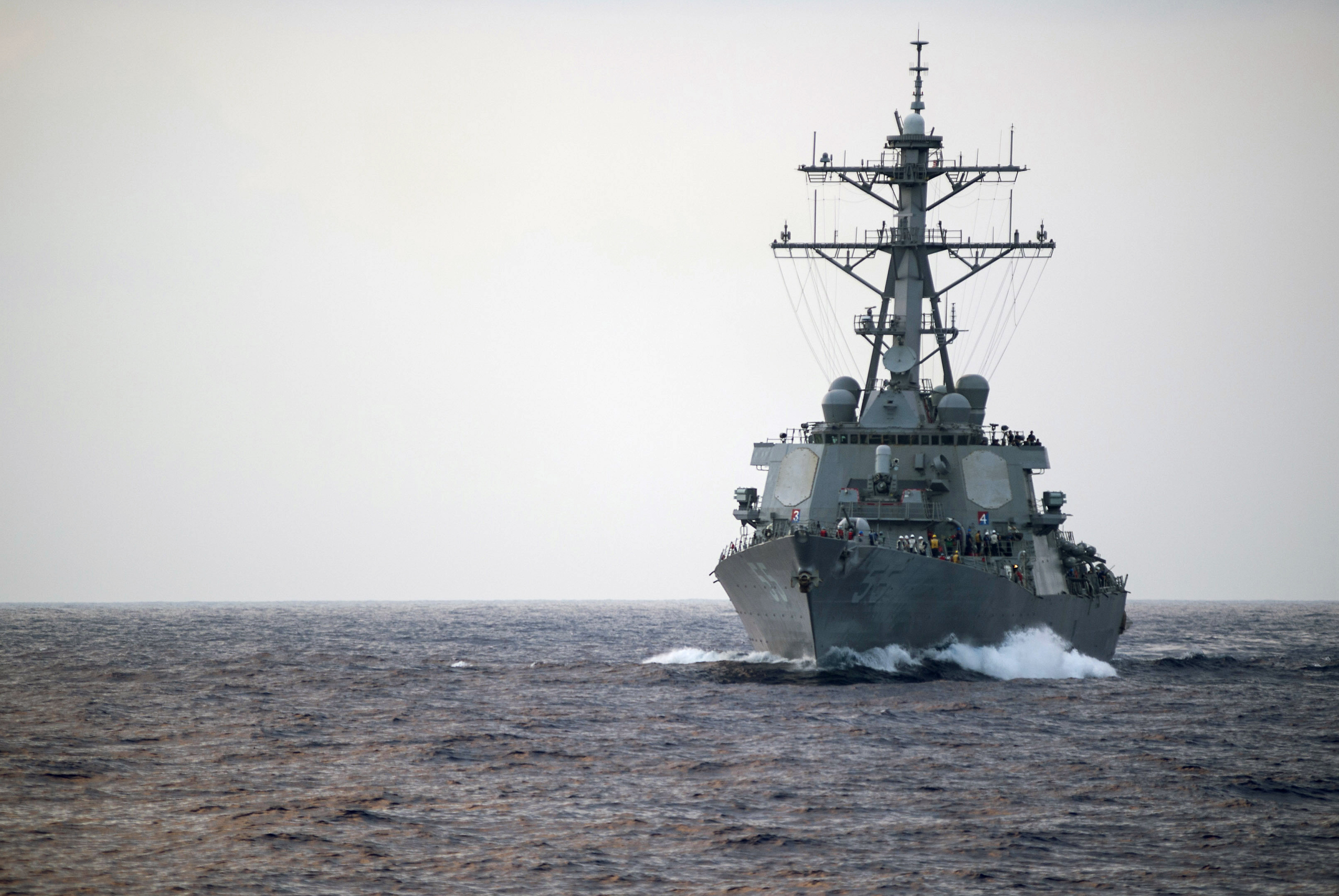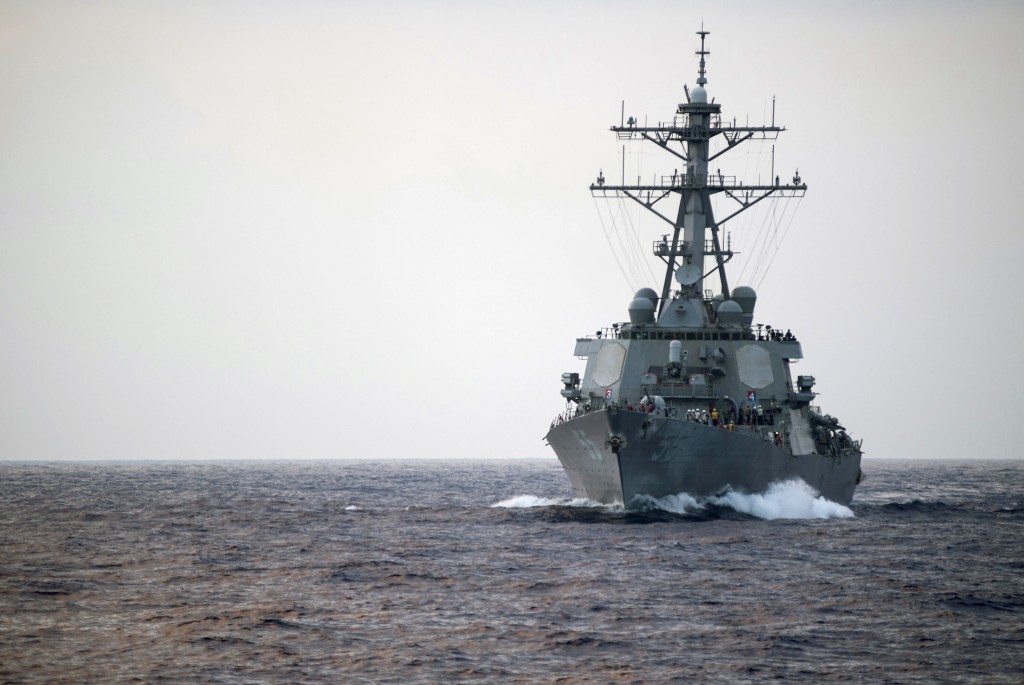Sourced : USNI News
By: Megan Eckstein
House and Senate appropriators reached an agreement to fund the government for the rest of the fiscal year that includes a $593-billion defense spending package to allow the Navy and Marine Corps to continue with planned ship and aircraft procurement and readiness increases.
This bill represents a compromise between the House and the Senate appropriations committees’ Fiscal Year 2017 spending bills, plus some additional money from the Trump Administration’s March 2017 request for supplemental funding to address near- and mid-term readiness shortfalls – about $15 billion in supplemental spending, compared to the $30 billion the administration requested.
This spending bill would give the Navy a $21.2-billion shipbuilding account, well above the recent average, as well as an $16.1-billion aircraft procurement account.
With that money, the Navy would be able to buy 13 ships and craft:
- Three Arleigh Burke-class guided-missile destroyers,
- Three Littoral Combat Ships,
- Two Virginia-class attack submarines,
- The Bougainville (LHA-8) amphibious assault ship,
- A 13th San Antonio-class amphibious transport dock (LPD-29),
- Two ship-to-shore connectors and a moored training ship,
according to summaries released by both the House and Senate committees and the bill’s explanatory document.
This is three ships more than the Navy had originally requested, with the third destroyer, third LCS and LPD-29 funding being added in by lawmakers.
The bill also provides $150 million for a joint Navy and Coast Guard effort to define the requirements and acquisition strategy for the Coast Guard’s heavy polar icebreaker. The Coast Guard will buy the lead ship in 2019, but this first sum will allow advance procurement of long lead time materials.
The Navy would be able to buy Boeing 12 F/A-18E-F Super Hornets and two additional Lockheed Martin F-35C Joint Strike Fighters to help deal with its fighter shortfall, as well as 11 Boeing P-8A Poseidon multi-mission maritime aircraft.
The Marine Corps would receive funding for four additional Joint Strike Fighters – two F-35B short-takeoff and vertical-landing variants and two F-35C carrier variants – to help accelerate the retirement of its aging fixed-wing inventory.
In all, this compromise bill gives the Navy $48.8 billion for procurement, compared to the $44 billion it requested for this year.
With both the Navy and Marine Corps experiencing serious aviation readiness challenges, the appropriations compromise bill adds funding to several key areas to support pilots and maintainers.
The operations and maintenance budget includes a $5.3 million addition for H-1 helicopter readiness and a $1.2 million addition for MV-22 tilt-rotor readiness in the air systems support line item, as well as a $10.7 million increase for MV-22 readiness and a $6.8 million increase for KC-130J readiness in the aviation logistics line item, compared to the services’ budget requests.
Additionally, the Marine Corps saw modest plus-ups in some aircraft procurement line items to boost H-1 and CH-53E readiness. A Senate Appropriations Committee summary of the bill notes the spending measure includes a total of $205.5 million to increase spare parts purchases to help raise aviation readiness.
Similarly, for ship readiness, the O&M budget includes $14.5 million in additional ship depot maintenance funds and $2.5 million in additional ship depot operations support funding, compared to the Navy’s budget request.
The Senate Appropriations Committee summary notes the bill adds $1 billion in research and development funds for the Defense Department overall as a result of the supplemental funding.
That increase in R&D funding can be seen throughout the Navy’s research and development funding section, which includes a $20 million increase for power projection applied research, $20 million increase for Marine Corps landing force technology, $40 million for autonomous surface unmanned vehicle research, $17 million for Future Naval Capabilities advanced technology development, $20 million to research aircraft carrier construction cost reduction initiatives, and $19 million to accelerate research and development for the LX(R) amphibious dock landing ship replacement design.
In all, the Navy and Marine Corps received
- $16.1 billion for aircraft compared to their requested $14.1 billion, or two billion more;
- $21.2 billion for ships compared to the requested $18.4 billion, or $2.8 billion more than requested;
- $3.27 billion for weapons compared to the requested $3.21 billion, or $58 million more;
- $634 million for ammunition compared to the requested $664 million, or $30 million less than requested; and
- $1.31 billion for Marine Corps-specific gear – ground vehicles and communications gear, for example – compared to the $1.36 billion request, or $55 million less than requested.
When Fiscal Year 2017 began on Oct. 1, 2016, lawmakers started the year with a continuing resolution that lasted through mid-December, funding the government at last year’s spending levels. When the December deadline came, Congress extended the CR through April 28, 2017. Last Friday, on the last day for which the government was funded, Congress passed a one-week extension.
The government is now funded to run through Friday, May 5. This compromise bill was announced on Sunday, April 30, and due to the short timeline for passing the omnibus spending measure – which includes spending packages for defense and all other federal departments and agencies, all within a single bill – it is unlikely that any additional changes will be made. Both the House and Senate will have to pass the bill and send it to the president to sign before the end of the day on Friday to avert a government shutdown.


